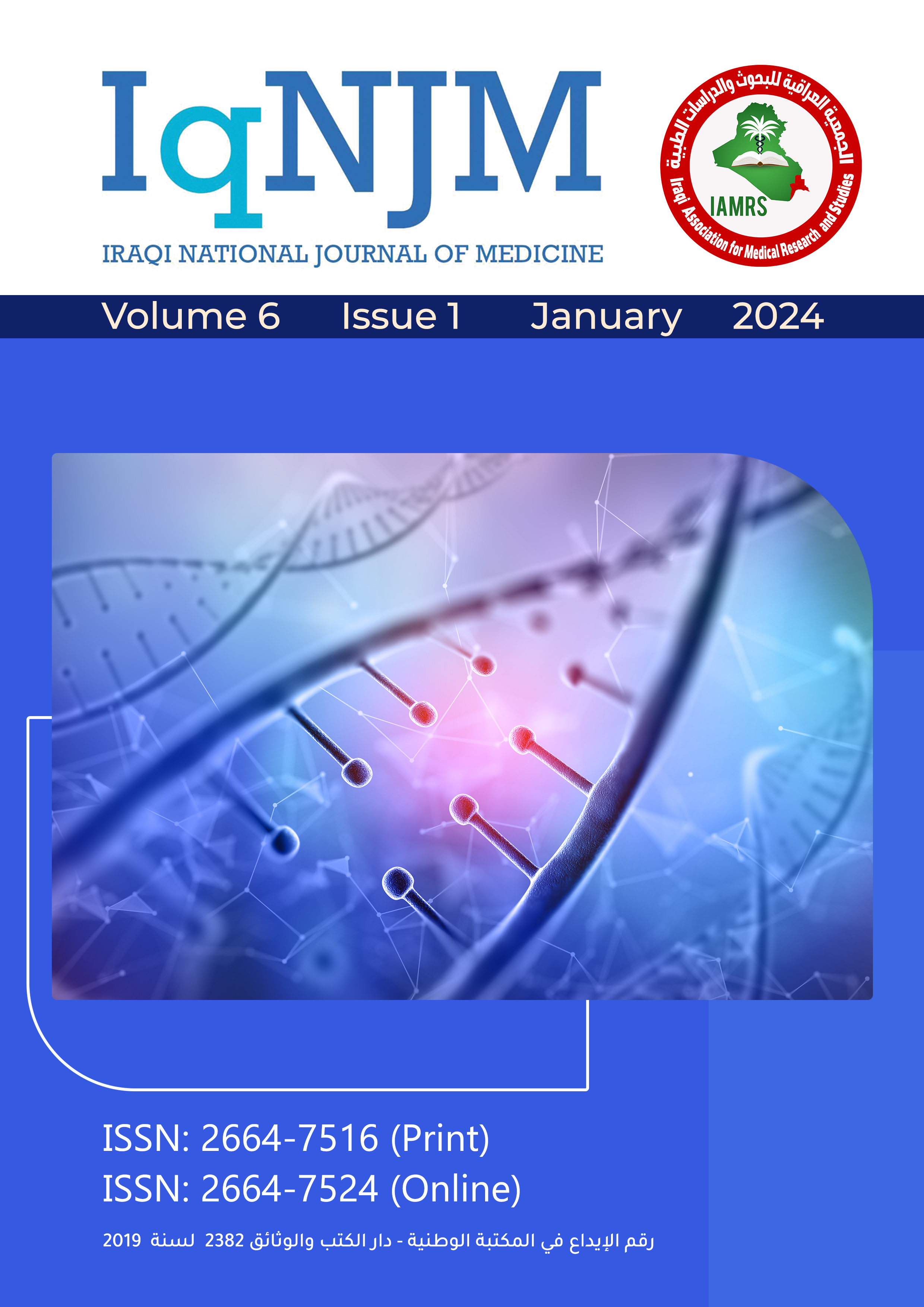Study of vitamin D deficiency among menopausal women in Basrah city
Main Article Content
Keywords
Vitamin D, MENOPAUSE, Diet, Sun exposure
Abstract
Background: Vitamin D deficiency is well-recognized worldwide. It is common in older adults, especially in women. Vitamin D deficiency is the most underdiagnosed medical condition in menopausal women. There are few epidemiological studies on the vitamin D status of menopausal women in Basra City, Iraq. Aim: The aim of the study is to determine the prevalence of vitamin D deficiency among menopausal women in Basra City and its correlation with various factors that lead to vitamin D deficiency in menopausal women. Methods: A prospective cross-sectional study was conducted on 200 menopausal women in the age group 46–65 years attending the gynecological outpatient clinic of Al Mawany Teaching Hospital and the gynecological clinic in Basra City, between September 2019 and August 2020. The level of vitamin D was assessed for each woman. A level of less than 30 ng/ml is considered vitamin D deficiency and a level of 30–100 ng/ml is considered a sufficient level of vitamin D. Results: There was a prevalence of vitamin D deficiency among 83% of menopausal women in Basra city, and the majority of menopausal women with vitamin D deficiency were in the age group of 51–60. Vitamin D deficiency has a significant correlation between sun exposure and dietary intake at 83.1% and 61.4%, respectively. Vitamin D levels had no correlation with hypertension and diabetes in menopausal women. Conclusion: This study helped us to evaluate the baseline vitamin D level among post-menopausal women and concluded a high prevalence of vitamin D deficiency in menopausal women in Basra city. There is a statistically significant correlation between vitamin concentration and age in the late menopausal period. All menopausal women ought to be advised on the advantages of taking vitamin D supplements, eating a healthy diet, and getting enough sun exposure.
References
2. Holick MF. Vitamin D is the underappreciated Delightful hormone that is important for skeletal and cellular health. Curr opin Endocrinal Diabetes. 2000; 9:87–98.
3. S Shurkar – U din, R Tabassum: Prevalence of vitamin D inadequacy in peri and postmenopausal women present at DOW University Hospital, Ojha Campus, A cross-sectional study.
4. Khol GL, Chee WS, Shariff ZM, Pouth M., et al. High prevalence of vitamin D insufficiency and its association with BMI for age among primary school children in Kuala Lumpur, Malaysia BMC Public Health. 2011; 11:95.
5. Holick MF. Vitamin D deficiency. N Engl J Med 2007; 19; 357(3):266–81.
6. Verhaar HS, Samson MM, Jansen PA, et al. Muscle strength, functional mobility, and vitamin D in older women. Aging. 2000; 12:405–406.
7. Caruso S, Rapisarda AMC, Cianci S. Sexuality in menopausal women. Curr Opin Psychiatry. 2016; 29:323–30.
8. Heaney RP. Lesson for nutritional science from vitamin D. Amm J Clin Nutr. 1999; 69:1327–1351.
9. MacLaughlin J, Holick MF. Aging decreases the capacity of human skin to produce vitamin D3. J Clin Invest. 1985; 76(4):1536–1538
10. Jone G. Pharmacokinetics of vitamin D toxicity. Am J Clin Nutx. 2008; 88(2):552–556.
11. Anita Kumari, Vinita Kumari. The study of Vitamin D deficiency in Peri and Postmenopausal Women of Jamshedpur, Jharkhand. International Journal of Contemporary Medical Research. 2018; 12(5):14–16.
12. Nithya P Jayakumar, Bharathi Rao, Nikil Shetty. Study of Vitamin D Status among Postmenopausal Women. Journal of South Asian Federation of Menopause Societies, 2017 January-June;5(1):28–34
13. Rachna Bachhel, Navyug Raj Singh, Jagtesh Singh Sidhu. Prevalence of vitamin D deficiency in North- West Punjab population: A cross-sectional study.
14. Goswami R, Gupta M, Goswami D. Prevalence and significance of low 25(OH) vitamin D concentration in healthy subjects in Delhi. Am J Clin Nutr.2000;72:472–75.
15. Mac Laughlin J, Holick MF. Aging decreases the capacity of human skin to produce vitamin D3. J Clin Invest 1985; 76:1536–1538.
16. Joergensen C, Gall M-A, Schmedes A, Tarnow L, Parving H-H, Rossing P. Vitamin D levels and mortality in type 2 diabetes. Diabetes Care. 2010 Oct; 33(10):2238–2243.
17. Benetos A, Rudnichi A, Safar M, Guize L. Pulse pressure and cardiovascular mortality in normotensive and hypertensive subjects. Hypertension [Internet]. 1998; 32(3):560–564. Available from: http://www.ncbi.nlm.nih.gov/entrez/query.fcgi?cmd=Retrieve&db.
18. Shin MY K. IS. Vitamin D: Is it a vitamin or a hormone? J Clin Biochem Nutr. 2012; 17:1–6.
19. R.P.J. van der Wielen, W.A. van Staveren, et. al. Serum vitamin D concentrations among elderly people in Europe. Lancet. 1995; 346(8969):207–210.
20. Heanery RP, Recker RR, Stegman MR, Moy AJ. Calcium absorption in women: relationships to calcium intake, estrogen status, and age. J Bone Miner Res 1989; 469–75.
21. Perez-Lopez FR, Brincat M, C. Tamer Erel , Florence Tremollieres ,Marco Gambacciani , Irene Lambrinoudaki ,et al. Position statement: Vitamin D and postmenopausal health. Maturitas. 2012; 71(1):83– 8.


